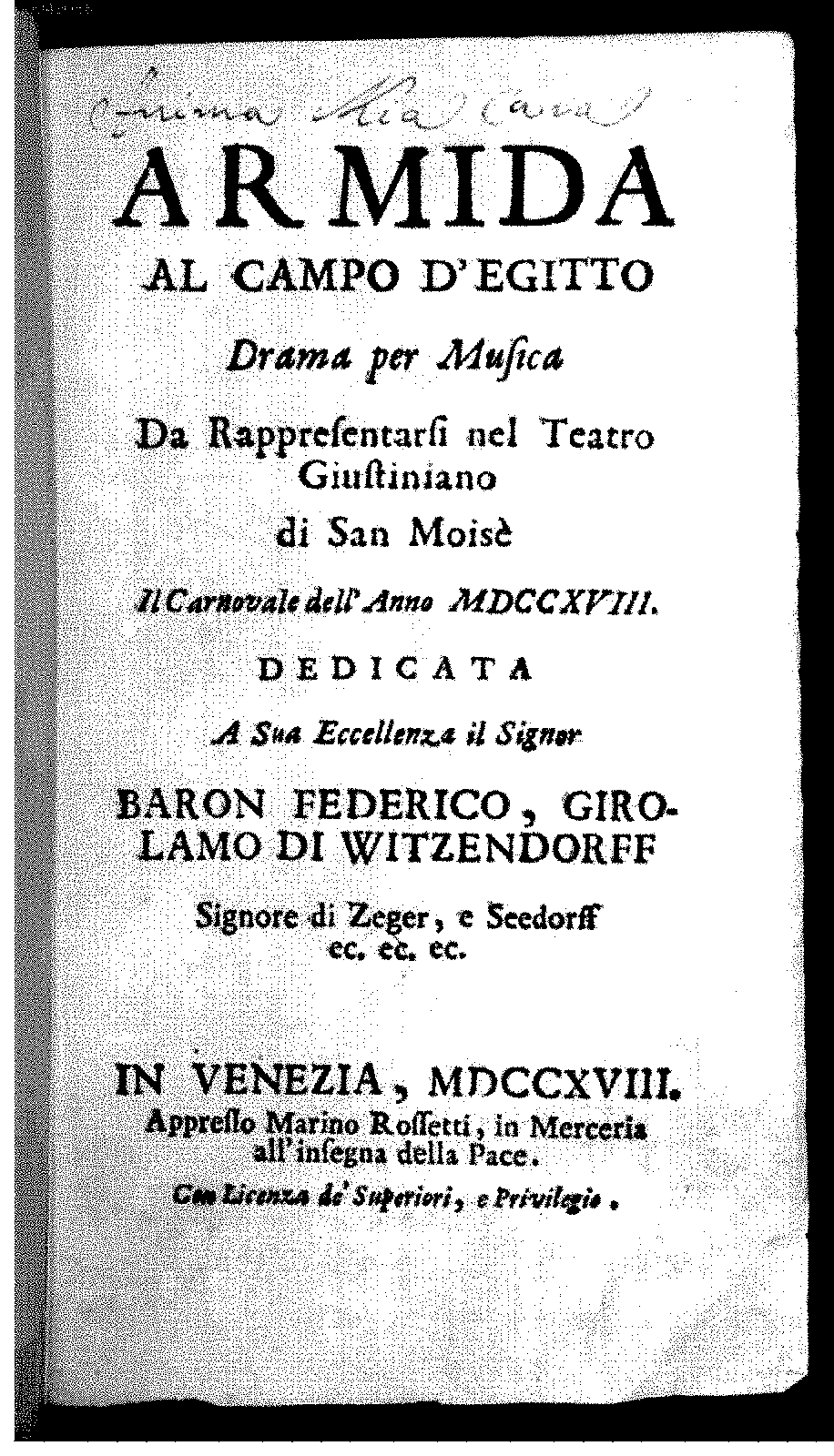

Here he composed more operas under the patronage of Cardinal Ottoboni. Vivaldi remained in Mantua for two years from 1718, writing cantatas and serenatas for the court. Following the success of Vivaldi’s opera Armida al campo d’Egitto there, the prince appointed Vivaldi as maestro di cappella da camera. He also wrote for theatres in Venice and Mantua, where the Habsburg governor, Prince Philip of Hesse-Darmstadt, was a famous music lover. His first opera, Ottone in villa, was premiered in Vicenza in 1713.

Opera became an increasingly important part of Vivaldi’s output in the second decade of the 18th century. He also wrote two oratorios for the Pietà, the most significant being Juditha triumphans (1716). Prior to these, he had disseminated a number of concertos in manuscript form. Publications of his works began appearing in 1705: trio sonatas, violin sonatas and concerto sets. He taught the violin there, organised services with music, composed and gave concerts. In the same year as his ordination, he was appointed to the Ospedale della Pietà, a Venetian convent for orphaned or illegitimate girls. His red hair earned him the nickname ‘il prete rosso’ (the red priest). He trained for the priesthood and was ordained in 1703.


Vivaldi played the violin from an early age, probably taking lessons with his father. Vivaldi’s concertos became a model for his contemporaries, and the form was soon one of the most important in eighteenth century Europe. He introduced a range of new styles and techniques to string playing and consolidated one of its most important genres, the concerto. But his most important achievement was in his music for strings. He ignited transformations in music for the church, the opera house and the concert hall. Vivaldi’s influence on the development of Baroque music was immense.


 0 kommentar(er)
0 kommentar(er)
